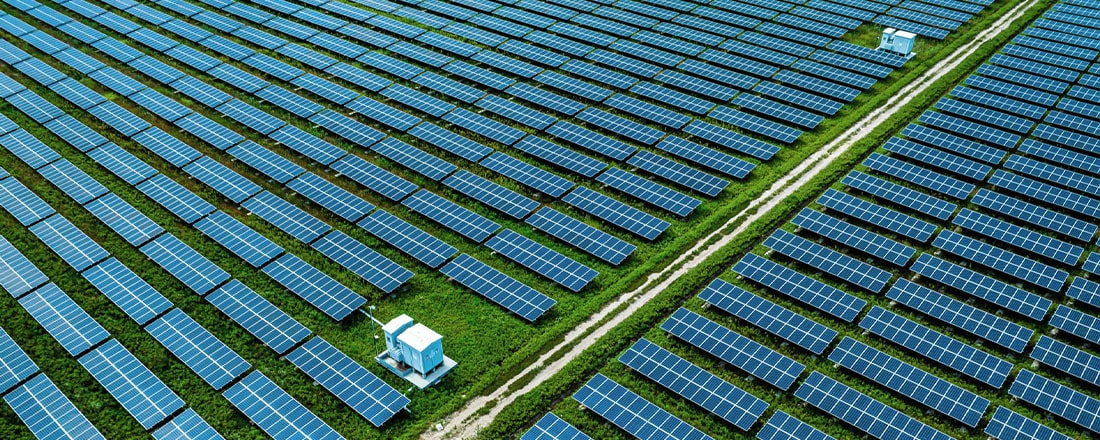Long-duration energy storage is crucial to expanding renewable energy access while ensuring energy reliability and resiliency. Some emerging opportunities for long-duration storage include:
● Pumped Hydro
● Compressed Air Energy Storage
● Vehicle-to-Grid Technology
● Green Hydrogen
Solar and wind power have proven themselves to be powerful clean alternatives to fossil fuels, but they have limitations due to their intermittency; the sun doesn’t always shine, and the wind doesn’t always blow. Energy storage lets us maximize the potential of intermittent energy sources and accelerate the decarbonization of our electric grid by storing excess energy produced during periods of high production and lower demand so that it can be released as needed.
Long-duration energy storage refers to technologies that can store energy for extended periods, typically from 8-12 hours to several weeks or months. To meet storage needs, we need to invest in cost-effective, long-term solutions. Here are some key long-duration storage technologies and considerations that go beyond the more ubiquitous lithium-ion battery.
1. Pumped Hydro
Pumped hydro storage accounts for 95% of utility-scale energy storage. Electricity is used to pump water uphill where it is stored in a reservoir. When additional generation is needed on the grid, typically during the peak hours in the evenings or during other instances when demand threatens to exceed supply, the water is released back downhill to spin turbines that generate electricity.
Considerations: These projects are flexible and low cost to operate, don’t generate emissions, have long storing periods, and are high efficiency. However, they’re expensive to build, require lots of land, can disrupt natural habitats, and reduce water quality. Further innovation is needed to address potential environmental issues and impacts.
2. Compressed Air Energy Storage (CAES)
CAES uses electricity to compress air and pump it into underground reservoirs for storage. During periods of high energy demand, the compressed air is released and used to power a generator.
Considerations: CAES has a high storage capacity, lasts a long time, and doesn’t create emissions. However, it’s less energy-efficient than some other long-duration storage options, and use is geographically limited based on the availability of underground reservoirs.
3. Vehicle-to-Grid (V2G)
V2G is a way of storing and dispatching energy by utilizing the batteries that already exist in electric vehicles. We typically think of EV batteries in terms of one-directional charging. With V2G technology, electricity flows in two directions: the EV can be charged from the grid, although preferably from on-site solar, and the EV can also send energy back into the grid. With proper V2G implementation and integration into the grid, utilities can compensate EV drivers for scheduling charging and discharging to align better with grid needs.
Considerations: V2G is low cost and high impact as it relies on preexisting and highly energy efficient technology. However, manufacturers have indicated that the changes to the uses for the car batteries require additional consideration. It’s also important to ensure that EV batteries are being charged with clean energy. V2G requires cooperation between a wide range of stakeholders including utilities, drivers, and the transportation sector making it more complex to manage and deploy at scale than traditional storage options. Needs include: building communication avenues around grid conditions, expanding V2G software and hardware, creating incentives to participate, and developing regulatory advancements to ensure safe deployment. Check out how MCE is exploring vehicle-grid interactions with our smart charging app MCE Sync.
4. Green Hydrogen
Hydrogen fuel is a flexible fuel that can be created through thermal, electrolytic, solar-driven, and biological processes, and can be used for many applications. Green hydrogen can be generated by using renewable electricity that can then be stored as a fuel to generate electricity using traditional turbines or cleaner fuel cells during peak demand hours.
Considerations: Green hydrogen has a unique capacity to store carbon-free energy for extended periods of time. However, green hydrogen is an expensive pathway because of low efficiency of renewable power storage applications, high cost of equipment, and lack of funding. Additionally, depending on what processes are used, hydrogen production and combustion may involve emitting air pollutants.
Challenges and Opportunities
While existing and emerging long-duration storage technologies offer exciting possibilities, cost, efficiency, and scalability must be addressed to make them viable for widespread adoption. Regulatory and market frameworks need to evolve to accommodate these new technologies and incentivize their investment and development.
With research, innovation, and increased energy storage funding from the 2022 Inflation Reduction Act, the future of energy storage is bright. As these technologies mature and become more economically viable, we can explore making them a bigger part of a cleaner, more resilient, and more reliable energy grid.






